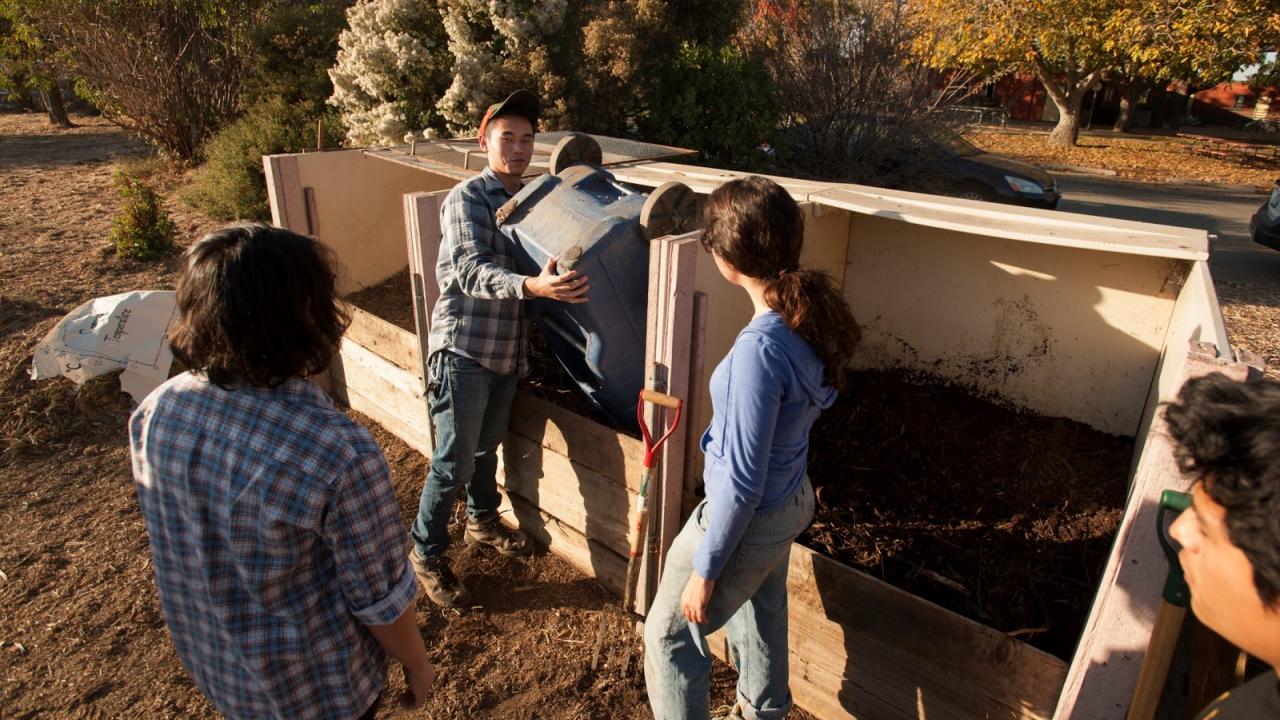
Summer Newsletter: Sustainability
Sustainability: Composting
By Talia Soalt, Wildlife, Fish and Conservation Biology ‘21
Have you ever reached into the deepest, darkest corner of your refrigerator to re-discover that one veggie that got deserted along the way to your dinner last week? I know I’ve been there. The good news is that this abandoned veggie doesn’t have to go to waste. Let’s talk about the application of composting -- a sustainable way to turn what once may have gone in your trash bin into repurposable black gold!
So what exactly is composting? Composting is the process by which nutrient-rich materials frequently regarded as “waste” are recycled into humus, a nourishing component of topsoil resulting from extensive decomposition of raw materials. While the process of composting can be accomplished differently, it begins with four resources: carbon-rich “brown” material (wood chips, dead leaves, animal bedding), nitrogen-rich “green” material (fresh food waste, grass, coffee grounds), oxygen, and water. Once created, the next step is to tend to the pile by: watering, to keep the proper moisture level; turning, to ensure all material heats up; and monitoring temperatures, to assess productivity. When given time, combined with a little TLC, organic matter decomposes at an accelerated rate, thanks to the help of our microbial friends -- bacteria and fungi. Since these microbes make soil a vital living organism, composting serves an important role in fostering soil health. What once seemed to be a heap of waste destined to pile up at the dump has now become your very own nutrient-dense, garden superfood!
Image from: https://bqlt.org/resources-for-gardeners
How does the student farm compost? Our primary composting operation in the Ecological Garden is a small-scale three bin system. We begin with a row of leftover vegetative materials, like plant trimmings and weeds from around the garden. Once chopped up and dried out, this material gets put into our first bin, our “active pile”. We oversee this pile by adding alternating layers of green and brown matter to it. At this stage, temperatures may reach 150-160℉, letting us know the thermophilic bacteria is having a blast. The microbes are the most active in this pile. Once the pile gets big enough, or we have used all of our finished compost, the “active” pile is flipped into a second bin, our “passive” pile. This allows time for the pile to sit, and for microbial activity to advance the decomposition process. During this stage, we use a probe thermometer to measure the temperature of the pile, which ranges from 80-120℉, and water the pile if needed. When temperatures get down to around 60-70℉, it is time to flip the pile into our third and final bin, our “finishing pile”. Lower temperatures let us know that our compost is just about ready to be sieved of larger fibrous woody material and wheelbarrowed to the garden beds where we spread it on top or dig it deeper into the soil
 A second method we use in the Ecological Garden is worm composting, or vermiculture. We have a box in the ground full of red worms which we feed fresh food scraps. The worms love the decomposing juices of this fresh material and, after eating, produce dense, nutrient-rich castings. This makes for great compost to be utilized around the garden.
A second method we use in the Ecological Garden is worm composting, or vermiculture. We have a box in the ground full of red worms which we feed fresh food scraps. The worms love the decomposing juices of this fresh material and, after eating, produce dense, nutrient-rich castings. This makes for great compost to be utilized around the garden.
A third type of composting we implement is a windrow system. Windrows go through a similar aerobic cycle as the three bin system, just at a larger scale. In the Market Garden, windrows stretch 200ft long and are full of remains including: discarded matter from CSA baskets, cover crops, and goat and sheep manure. We use a tractor driven compost turner, which efficiently mixes and turns the large pile. Lastly, a compost spreader is employed to transfer ready-to-use composted material to the fields where it becomes available as a nutrient.
How can you set up a similar system at home?
Some methods of composting may be more practical depending on how much space you have and the type of waste products you accumulate. Let’s help you figure out which type of composting may work best for you.
- Aerobic composts, similar to the ‘three-bin’ composting we use, are great if you have a backyard and find that the majority of your waste contains more brown matter. Check out tips from the EPA on getting started.
- Composting may seem challenging without a backyard or municipal bin. Fortunately, an eco-friendly solution to this (and a fun side hobby) is a worm bin. A worm bin is also a great method if you find that the majority of what you are throwing out is nutrient-dense food waste. Learn how to make your own as detailed by the sanitation departments of NYC and LA.
- Lastly, a third option is to get involved in Project Compost, a student-run ASUCD effort to eliminate food waste on campus through composting. For more information, check out their website.